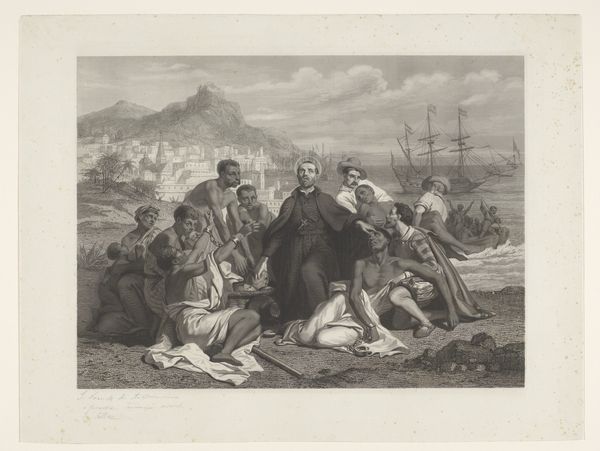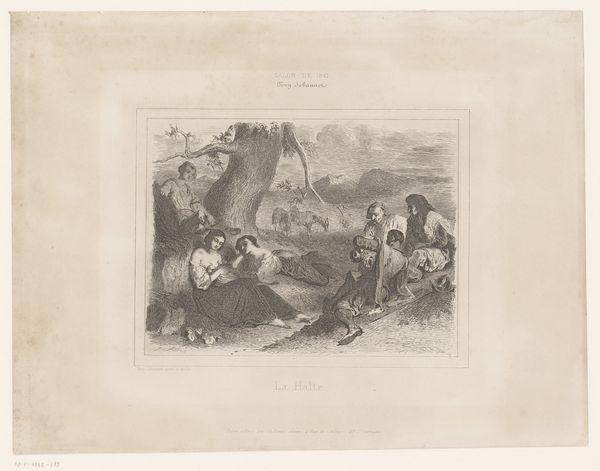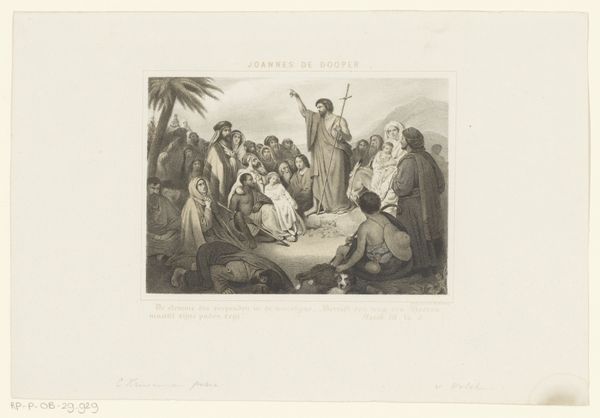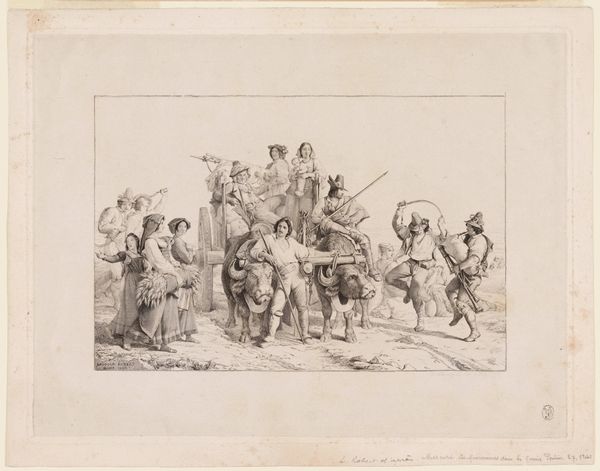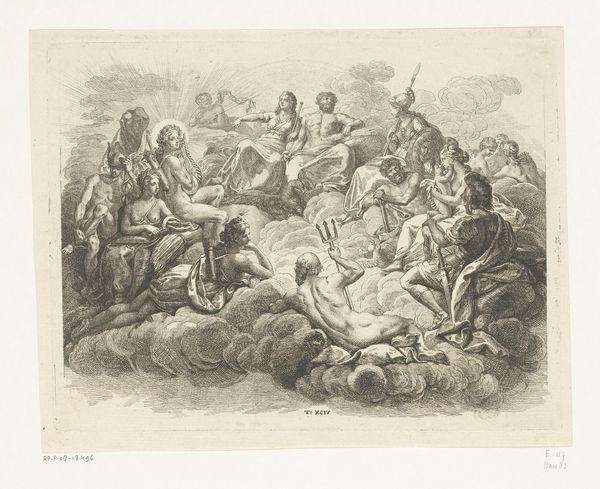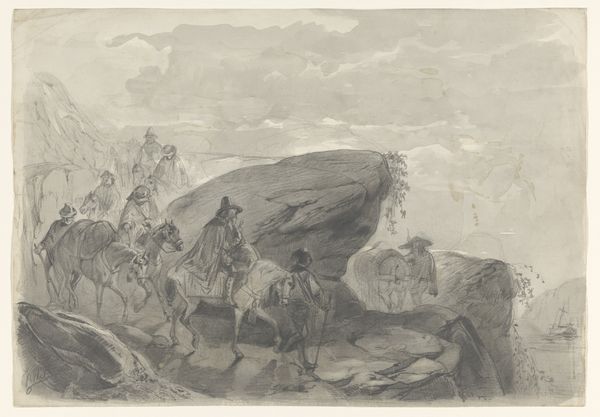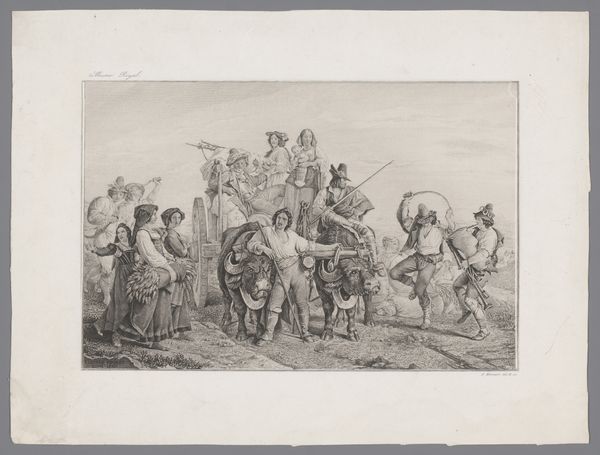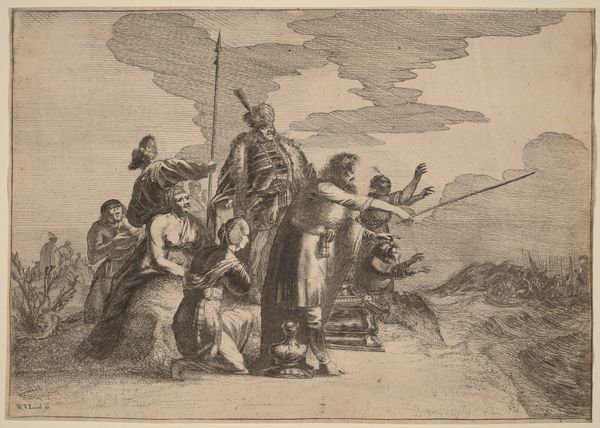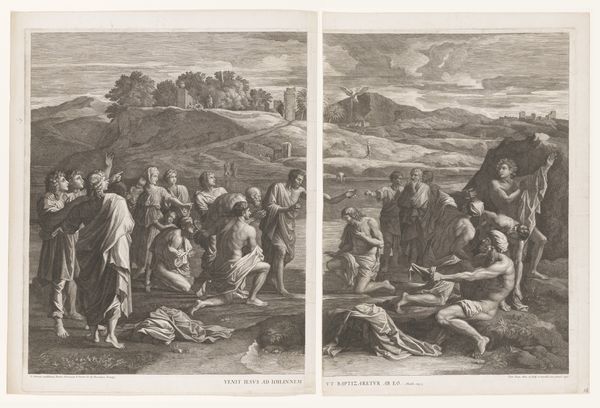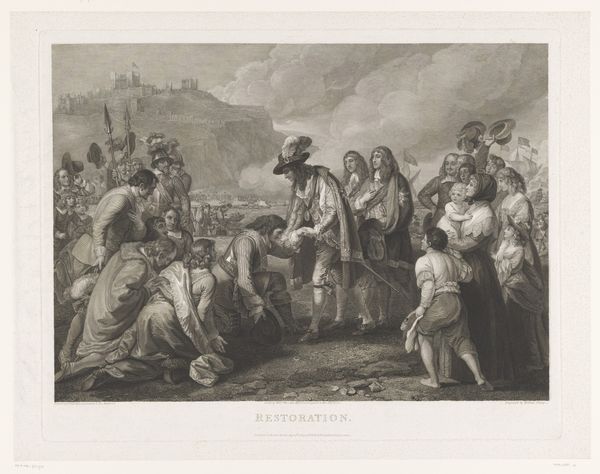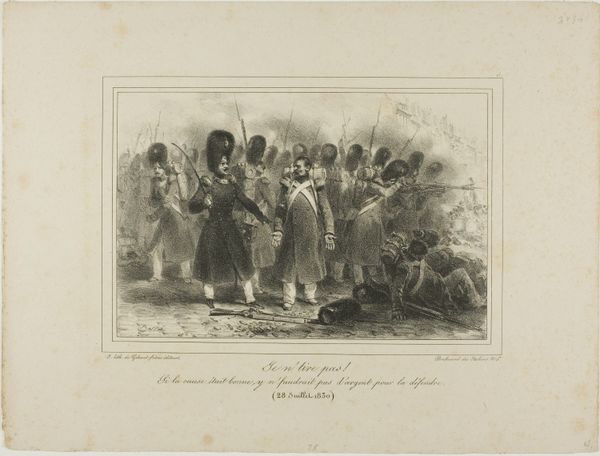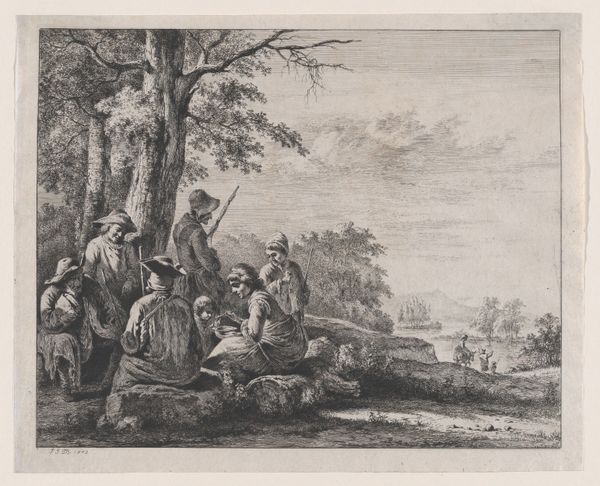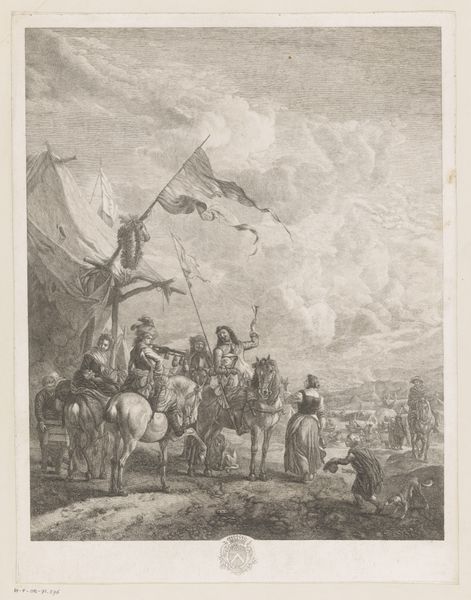
print, engraving
# print
#
landscape
#
figuration
#
historical photography
#
old-timey
#
romanticism
#
19th century
#
genre-painting
#
history-painting
#
engraving
Dimensions: height 634 mm, width 850 mm
Copyright: Rijks Museum: Open Domain
Curator: This is "Improviserend muzikant met publiek in de open lucht" or, translated, "Improvising Musician with Audience Outdoors." The engraving comes to us from Zachée Prévost, dating roughly between 1807 and 1861. It is currently held in the Rijksmuseum collection. Editor: It evokes a feeling of idealized folk life. The scene, a musician serenading a gathering by the sea, is staged in a way that feels both intimate and…well, performed. Curator: Performed is an apt description. Romanticism elevated folk culture, shaping narratives around authentic, often rural, existence. Consider the material conditions necessary for the creation of such an image—the engraver's tools, the paper itself, the socioeconomic structure that allows for the production and consumption of prints depicting idealized peasantry. Editor: Absolutely, and it served specific societal functions. Prints like these circulated widely, shaping ideas about national identity and cultural heritage. The image taps into the vogue for picturesque scenes and romanticized versions of otherness, of the type particularly marketable for middle-class consumers in burgeoning urban centers. Note how it juxtaposes leisure and labour - the musician is the emblem of creativity but we might be compelled to ask, where does the food on his table come from? Curator: Precisely, and the technology of engraving itself deserves attention. Each line, each area of tone, results from manual labor, a process both artisanal and reproducible. This bridges a fascinating gap between 'high art' and a commodity. Were such prints distributed through networks promoting specific political viewpoints, aligning the 'folk' identity with nationalism, perhaps? Editor: I agree, that's entirely plausible, given the era. This period saw intense cultural nationalism and interest in folk traditions as foundational to national identities. Furthermore, you cannot remove the social role of museums and collecting here, in shaping the canon. Images like this find renewed life by their display and discussion. Curator: A keen point. Our institutions, in collecting and presenting such artifacts, perpetuate dialogues about class, identity, and representation. It’s worthwhile considering who controls that narrative and how the material artifact becomes imbricated in that structure. Editor: Indeed. The circulation of this image then and now embodies these complex considerations regarding production, identity, reception, and societal structure. Curator: So true; thinking about what's not pictured in that landscape and the implications is key. Editor: An exercise which can then enrich the image infinitely.
Comments
No comments
Be the first to comment and join the conversation on the ultimate creative platform.
